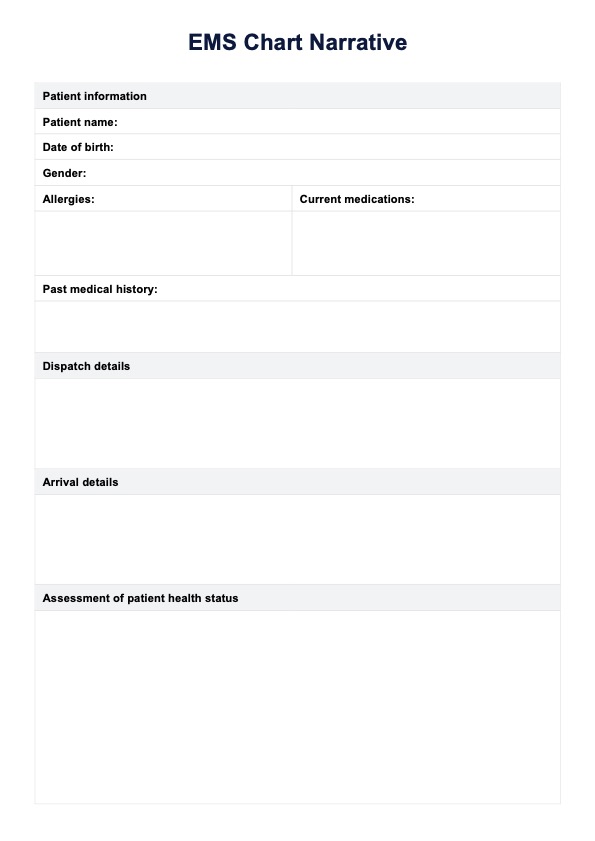Our template makes creating an EMS chart narrative easy. The template provides an easy-to-follow structure that organizes all necessary information neatly and logically.

EMS Chart Narrative
Seeking a simpler, more effective way to write an EMS narrative? Optimize your practice management using our EMS Chart Narrative Template!
Use Template
EMS Chart Narrative Template
Commonly asked questions
EMS Chart Narrative Templates can be used for various scenarios relating to effective EMS patient care documentation. This resource is typically used during EMS dispatch or health center emergencies.
The templates help EMS personnel construct their EMS narratives. These templates structure all necessary information, allowing professionals to fill in information related to each section.
EHR and practice management software
Get started for free
*No credit card required
Free
$0/usd
Unlimited clients
Telehealth
1GB of storage
Client portal text
Automated billing and online payments











